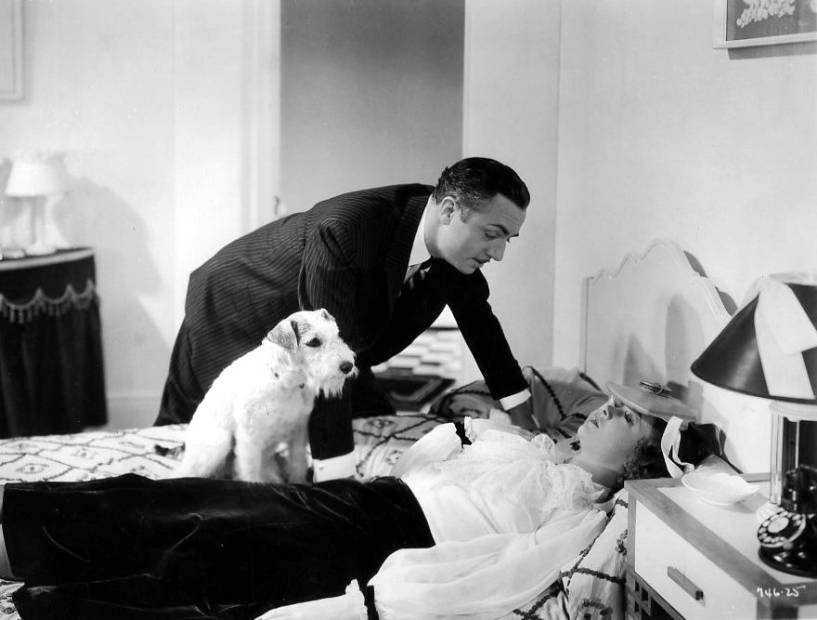By Michael Shook
Though I fancy myself a modern-enough person – apart from my animus toward cell phones, which has nothing to do with modernity and more to do with a desire to be nominally present, at least, to what is going on around me – I have nonetheless always felt drawn to other ages, some from long ago, some more recent. One of the nearer times is roughly the first half of the 20th century. The music, the literature, and the films of that time are stellar. I am tempted to say it was a golden age, but golden or not, a remarkable time it was.
Thus, among the many blessings gifted to me at birth, near the top of the list is that film was (is) still a relatively new phenomenon. Yes, it had already been around for more than 60 years, but that’s quite young for what was an entirely new art form, and that of course is exactly what films are. Prior to the late 1800s, a film was literally an impossibility, since the technology to make one did not exist. It is exciting to be able to experience, to be (almost) in on the earliest years, and earliest iterations, of what film was, is, and can be.
What a delight it would be if we could regularly view the best of black and white films on a full-sized screen. Were I to conjure such a thing, I would start with some favorite silent films, classics well-known by name, at least, and which greatly influenced subsequent movies.
First up would be Fritz Lang’s 1927 extravaganza, “Metropolis” (definitely not to be confused with Coppola’s recent effort). It is astonishing in every sense. It is long – almost 2½ hours – but is a marvel of acting, set design, special effects, action, pathos, and drama. Lang, who went on to helm many excellent films (among them some of the very best film noirs) pushed his actors and crew as few directors would, at least until Stanley Kubrick. The result of his demanding quest for perfection is that “Metropolis” is superb entertainment, if at times uneven despite the company’s Herculean efforts. And the themes explored can give rise to hours of discussion.
Next is the first true vampire movie, 1922’s “Nosferatu,” directed by F.W. Murnau (a 1920 film, “Genuine,” is disqualified, as it is a tale of a succubus, not a bona fide vampire). An unauthorized take on the novel “Dracula,” it is one of the creepiest movies I’ve ever seen. Not terrifying in the manner of “Psycho” or “The Shining,” but nevertheless one that, as Roger Ebert said, haunts the viewer long after it ends.
Max Schreck, in the role of the vampire Count Orlok, contributes mightily to that effect, via fine acting and startling make-up – those fingernails, those teeth! (And as long as we’re talking vampires, 2000’s “Shadow of the Vampire,” though neither silent nor black and white, makes a wonderful accompaniment to “Nosferatu.” A fictional account of the making of the latter, it is riveting, scary, humorous at times, with an ending that surprises – while it also comments on our late 20th, early 21st century obsession with being on camera).
Lastly, “The Cabinet of Dr. Caligari,” from 1920, is regarded by many as the ultimate celluloid example of German Expressionism, as well as the first true horror film. In any good horror movie, the purveyor of the evil attempts to ingratiate himself to those around him. But of course, the good Dr. Caligari, soon enough, is revealed to be not a very nice person, one who keeps a murderous somnambulist in his eponymous cabinet. Or does he?
Who is Caligari? Who is Cesare, the somnambulist? We think we know, but the film portrays the inner life of mind as much as the outer physical life, and the inner realm is often a place in flux. The sets are simply astonishing, and along with the cinematography, the audience is thrown off-balance again and again. As art forms are wont to do, “Caligari” reflects its time and the beginning of the modern existential crisis that grew out of the slaughter of World War I, and the ensuing social, economic, and political turmoil in early Weimar Germany.
But, on to the talkies! Something light-hearted, frothy, and gay would go well after the films just mentioned. And you can’t get frothier, nor more gay than the “The Thin Man” murder mystery series, beginning in 1934. Adapted from Dashiell Hammett’s novel, the film starred William Powell as Nick Charles, a blue-collar detective who retires after marrying Nora, a delightful, beautiful, and very wealthy Nob Hill heiress, played by Myrna Loy. A wire-haired fox terrier, named Skippy, completed the primary cast, in the role of their dog Asta. He was nearly as popular as Loy and Powell and was paid $250 a week for his canine scene-stealing.
The first three films in the series are my favorites, but there were six in all (followed by a radio show, a TV series, a Broadway musical, and a stage play). The men’s suits and hats are fabulous, the women’s gowns and furs slinkily more so, and everyone drinks and smokes like there’s no tomorrow. None of that would matter though, unless the banter, the quips, and the witticisms didn’t fly like confetti at New Year’s Eve, and oh, do they!
The truth is, Loy and Powell are simply so attractive, their chemistry so delicious, that I wish I could join them at one of their numerous, endless cocktail parties, wear a swank tuxedo, and soak it all in, because it’s just so darned much fun. Even if it involves murder.

